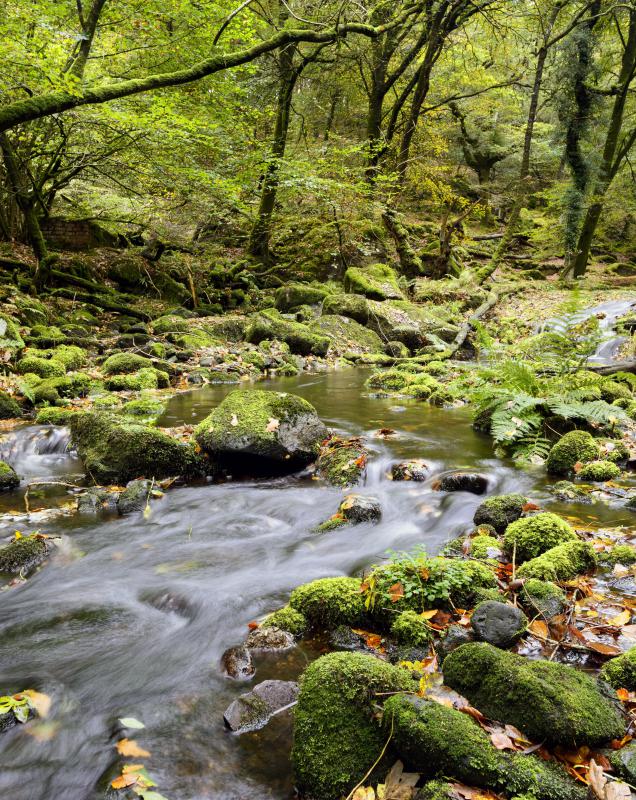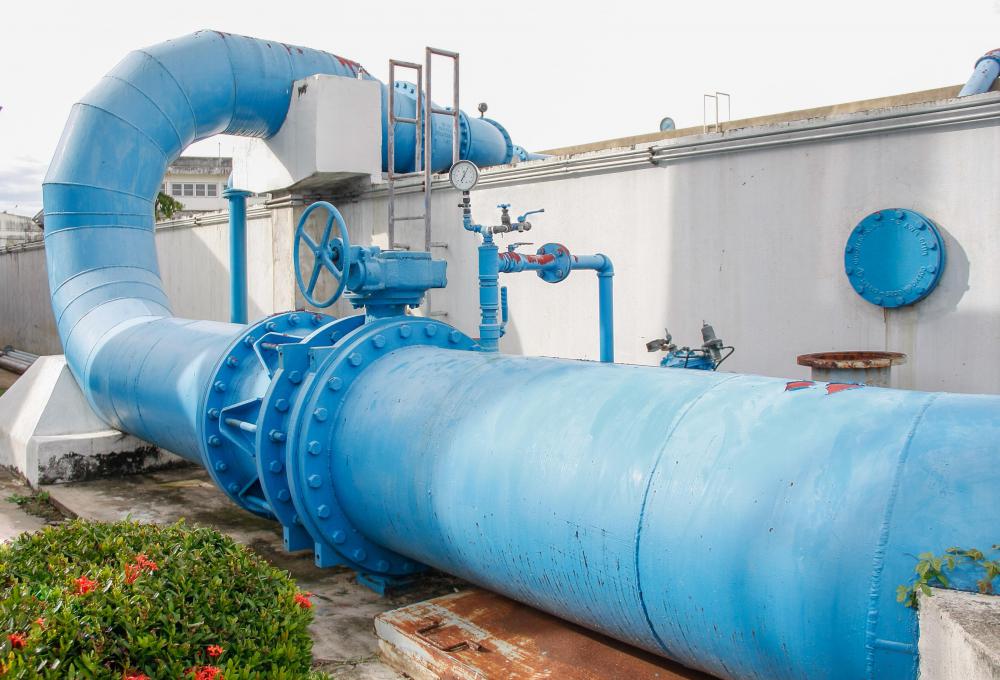At AllThingsNature, we're committed to delivering accurate, trustworthy information. Our expert-authored content is rigorously fact-checked and sourced from credible authorities. Discover how we uphold the highest standards in providing you with reliable knowledge.
What is Groundwater?
Groundwater is potable water which is stored underground. It can be confined, which means that a deposit of water is surrounded by nonpermeable rock, or unconfined, in which case it is surrounded by permeable rock, gravel, soil, and other materials. Around 20% of the world's freshwater is groundwater, and groundwater makes up a significant portion of the potable water consumed worldwide, with up to 50% of some populations relying on groundwater for drinking, bathing, industrial production, and a variety of other tasks.
A number of things can lead to the development of a groundwater formation. Rainfall, for example, drains into the ground and into deposits of groundwater, and runoff from rivers, streams, and lakes also winds up in the world's groundwater. Groundwater levels are also supplemented by snow melt and melting glaciers, and the supply may be seasonal, depending on high rainfall and snow melt to supply groundwater in the spring, with supplies which dwindle in the late summer and fall.

When a deposit of groundwater can be used sustainably as a water source by humans, it is known as an aquifer. Many people try to seek out contained aquifers, because the quality of the groundwater tends to be better when it is contained. Contained aquifers are at less risk of pollution, making the water safer to drink. In an unconfined aquifer, water can be tainted with chemicals, biological agents, feces, and other materials which are not desirable in drinking water.

One of the most common ways to access a deposit of groundwater is a well. Wells are drilled down into deposits of groundwater and pressurized so that the water bubbles to the surface, allowing people to use it. People can also dip buckets into wells to collect the water, as has been done historically. It is also possible to access groundwater through springs, which periodically bubble up with fresh groundwater. Historically, settlements have often been constructed around springs, to save the cost of sinking a well to supply a community.

Sometimes, a water source dries up. This happens when the aquifer is so depleted that it cannot provide water anymore. Sometimes, drilling deeper can solve the problem, by accessing the bottom of the aquifer. In other instances, a well or spring may refill itself at a later juncture, after the aquifer has had a chance to recover. Abandoned wells are viewed as a safety risk in some areas, since the lack of maintenance can result in an uncovered well which people or animals could fall into.
Frequently Asked Questions
What is groundwater and where does it come from?
Groundwater is the water that fills the cracks and spaces in underground soil and rock layers. It originates from rain and snowmelt that seeps down into the ground. This process, called infiltration, replenishes aquifers which are natural underground storage spaces. Groundwater can also come from surface water bodies like lakes and rivers that percolate through the soil.
How does groundwater affect ecosystems?
Groundwater plays a crucial role in sustaining ecosystems, especially in arid regions. It feeds springs and wetlands, providing essential habitats for a variety of plants and animals. Groundwater contributes to the base flow of rivers, ensuring they continue to flow during dry periods, which is vital for aquatic life and the species that depend on these water bodies.
Can groundwater become polluted, and how does this happen?
Yes, groundwater can become polluted through human activities and natural processes. Contaminants from agricultural runoff, leaking septic systems, industrial discharges, and improper disposal of hazardous waste can seep into groundwater. According to the Environmental Protection Agency, these pollutants can render water unsafe for drinking and harm aquatic ecosystems.
What is the significance of groundwater for human use?
Groundwater is a critical source of water for human consumption, agriculture, and industry. It supplies about half of all drinking water in the United States and nearly 40% of water for agricultural irrigation globally. Its significance is heightened in areas where surface water is scarce, making it a lifeline for many communities and economies.
How is groundwater recharged?
Groundwater is recharged naturally by precipitation and surface water that infiltrates the ground. This process can be enhanced by human-made structures like recharge basins that increase the amount of water seeping into aquifers. Managed aquifer recharge is a technique used to deliberately replenish groundwater to prevent overuse and depletion.
What are the consequences of overusing groundwater?
Overusing groundwater can lead to a decline in water levels, land subsidence, and reduced water quality. As water tables drop, wells may no longer reach the groundwater, requiring deeper drilling that is more expensive and energy-intensive. Land subsidence, the sinking of the ground surface, can damage buildings, roads, and other infrastructure. It can also reduce the aquifer's capacity to store water in the future.
AS FEATURED ON:
AS FEATURED ON:













Discussion Comments
I can remember a severely dry summer in which my city's water supply dried up. We went for so long without rain, and the scorching temperatures led to the quick evaporation of what little water remained in the aquifer. Everyone's water bills soared, and the city was in an uproar.
They had to tap into a neighboring city's water source, and people in that city were upset, because they hadn't seen much rain in awhile, either. Though they had more groundwater than we did, they knew that we could soon deplete their source.
There really was no good solution to the problem. Many people had to move because of the ridiculously high water bills, and the ones that remained were not happy. Lots of people stopped drinking water and switched to sodas to save a bit of money.
@Perdido – Unpolluted groundwater is the best kind. I get my drinking water from a nearby spring, and I cannot stand to drink bottled water after having tasted the purity of the groundwater.
I live in a hilly area near the woods and a clear stream. Several natural springs exist in this region, and I take advantage of them. I go out to the spring with an empty case of bottles, and I bottle my own spring water.
Whenever I am getting low on water, I go out and do this. I find it so refreshing. I would rather drink this groundwater than sodas or tea, and the best part is that it's free!
I have a fear of those old groundwater wells. A kid in my neighborhood fell into one while playing, and it took authorities an entire day to rescue her.
The well was so deep, dark, and narrow that it posed difficulties to rescuers. I know that poor kid had to be terrified beyond belief.
I have a fear of the dark, and a well would be about the darkest place anyone could encounter. No sunlight could permeate that deep chasm, and you would have nothing but your fears to torment you.
Everyone was so relieved when they finally brought her to the surface. They capped off that well and made it illegal for anyone to have uncovered wells in the neighborhood.
My elderly neighbors have depended on a well in their backyard for water for all of their lives. I have drunk their water before, and it has a sweetness that you don't find in most tap water anymore.
My neighbor tasted tap water at her daughter's house, and she nearly choked on it. Since she had become accustomed to fresh groundwater with no chemicals added, she could really taste the chlorine in her daughter's water. She told her that it can't be good for her health.
Honestly, after tasting well water, I could barely tolerate the tap water in my own house. So, I got a water filter to attach to the sink. It tastes much better now.
Post your comments